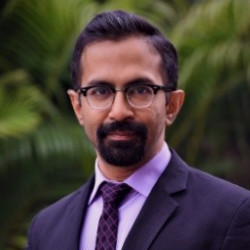Bridging financial inclusion for women with disabilities in Indonesia
by Rosalinda Birdinia Rudangta, Sonal Jaitly and Rahul Ganguly
Jul 9, 2025
5 min
Women with disabilities in Indonesia remain largely excluded from formal financial systems due to structural barriers, inaccessible digital platforms, and gendered discrimination. While success stories like Ibu Rohana’s demonstrate the transformative potential of inclusive financial services, such cases are rare without systemic, rights-based reform. Achieving true financial inclusion requires intentional design, co-creation with persons with disabilities, and institutional accountability to ensure access, agency, and economic leadership.
Every morning, Ibu Rohana prepares her signature nasi uduk for a loyal community of customers. Even though she walks on a prosthetic leg due to her mobility impairment, she has built a successful nasi uduk business with the support of collateral-free loans and peer group networks. Her success results from the support of Koperasi Mitra Dhuafa (KOMIDA), one of Indonesia’s largest microfinance institutions. Rohana’s success story shows how financial services can do more than offer access, they can shift power and enable real economic agency for women with disabilities.
Anchored in the UN Convention on the Rights of Persons with Disabilities (UNCRPD), the rights-based model of disability recognises that access to financial services is not a matter of charity. It is a fundamental human right. This model obligates financial institutions and regulators to move beyond goodwill to fulfil their legal duties as duty-bearers responsible for ensuring the full and equal economic participation of persons with disabilities. This framing is particularly relevant when we examine financial inclusion in Asia, where persons with disabilities, and women in particular, remain largely invisible within formal financial systems. Their exclusion goes beyond limited access; it reflects deeper structural barriers that deny them control over economic resources, decision-making power, and opportunities for enterprise leadership. For financial inclusion to be truly transformative, it must be understood not simply as expanding access, but as a mechanism for redistributing power.
As per WHO estimates, around 690 million people in Asia and the Pacific, or nearly one in six, live with disabilities, where financial exclusion remains widespread. Fewer than 20% of PWDs in low‑ and middle‑income countries, including across the Asia‑Pacific, have access to formal financial services. In countries, such as Thailand and Indonesia, people with disabilities face poverty rates 5–6% higher than the national average. Amid such challenges, financial services could play a key role in improving economic security. However, women with disabilities experience added exclusion shaped by gender discrimination, caregiving responsibilities, limited income opportunities, and persistent social stigma. In the case of rapidly digitalizing economies like Indonesia, financial products and platforms are rarely designed to address these intersecting barriers.
Even when Indonesia had significantly expanded financial access, visible gaps persist. Only 24.3% of persons with disabilities over the age of 15 have a bank account, compared to 47% of those without disabilities. Only 1.1% access digital financial services (DFS), far below the national average of 8.1%. The gender gap is sharper still. Only 42.1% of women with disabilities use DFS, compared to 60 % of men with disabilities. Such data reflects more than inequality. They reveal a financial system that was never designed with PWDs at its core.
Even when OJK issued Regulation No. 76/POJK.07/2016 that mandated PwD accessibility in financial services, its implementation has remained limited. Most financial service providers (FSPs) have focused on physical access, such as installation of ramps or wheelchair-friendly ATMs. Yet more profound and systemic constraints are overlooked. These include inaccessible digital platforms, limited staff capacity, and rigid onboarding procedures that create friction for users with disabilities.
MSC’s field experience highlights how inclusive financial services can be transformative when financial services move from transaction to transformation, from access to agency. Our recent research examined barriers and opportunities for improving financial access for women with disabilities. The findings underscored how responsive product design can facilitate meaningful financial participation. Rohana’s success is a perfect example from our field experience. At 45, she finances her children’s education, renovates her home, and manages a small shop.
Her inspiring story proves financial tools can be designed to uphold rights, not merely compensate for needs through accessible and relevant services. Achieving this requires confronting the full intersectionality of exclusion. When financial services consider the needs of PWD, it can open the gates to opportunities and build resilience for a group long overlooked by the formal financial sector. But Rohana’s success remains the exception. Making such inclusion the norm requires a shift from reactive accommodations to systemic, rights-based design.
Most financial institutions, including MFIs, still lack active engagement with women with disabilities as a target segment. High healthcare and personal assistance costs are hardly covered by insurance, which adds to the financial pressure. Only 14.2% of PWDs in Indonesia have accessed formal credit. Women with disabilities get excluded based on perceived risk, unstable income, or a lack of collateral. These criteria disproportionately give a disadvantage to those who are already on the margins.
At such a juncture, women with disabilities, faced with limited alternatives, often turn to informal sources such as digital loans, “buy now, pay later” services, or community-based credit. These may offer temporary ease of access but face risk. Most DFS platforms are inaccessible and lack features, such as screen-reader compatibility, audio navigation, or simplified e-KYC processes. This leads to a misunderstanding of terms and conditions, which results in over-indebtedness or exploitation by predatory lenders.
This marks the digital divide in action, and it continues to widen for women with disabilities in the financial sector.
If we are to achieve institutional transformation toward a disability-inclusive financial system, Indonesia will need more than improvements in physical infrastructure. It demands products, platforms, and services that are designed to mirror the diverse lived experiences of users. Universal design principles must integrate across digital interfaces, credit products, and customer support systems. For example, individuals with visual impairments may require voice-guided interfaces or in-person assistance, while those with hearing impairments benefit from captioned content or sign language interpretation. Financial services cannot follow a one-size-fits-all model if they intend to serve everyone equitably.
Crucially, true inclusion also demands co-design, not just consultation. In line with Article 4(3) of the UNCRPD, financial service providers must meaningfully engage with organisations of persons with disabilities (OPDs) as partners in design, testing, and implementation of financial products. Inclusion must begin with listening to the people and be supported by reliable data. Regulators can play a key role by requiring the collection and reporting of disability-disaggregated data through ESG or social performance frameworks. Without data, financial exclusion will remain invisible and unaddressed.
Indonesia has made vital strides in its attempts to broaden access to financial services, but women with disabilities remain at the margins. If stakeholders are bridging this gap, they will need more than inclusive slogans. Regulators, FSPs, and policymakers must take intentional, institutionalised action.
Visibility is only the first step. Women with disabilities must be seen not as fringe beneficiaries, but as full participants in the financial system. Yet true inclusion goes beyond visibility as it requires a shift in power, voice, and agency within financial systems. Too often, women with disabilities are dismissed as unprofitable or high-risk. Yet their lived experience, resilience, and entrepreneurial capacity tell a different story. One of the potential, not pity.
Financial systems are more than mechanisms of transaction. They are instruments of agency, dignity, and independence. If Indonesia and the wider region are serious about inclusive finance, they must demonstrate what rights-based, power-shifting financial inclusion looks like. Not symbolic access, but structural transformation. Not passive service uptake, but active economic leadership. Women like Ibu Rohana reflect the possibilities that emerge when financial systems are built not just for those at the intersections of gender, disability, and economic exclusion, but with them.
This article was first published on Magdalene.co platform on August 1st, 2025
Written by

Rosalinda Birdinia Rudangta
Assistant Manager
Sonal Jaitly
Associate Partner
 by
by  Jul 9, 2025
Jul 9, 2025 5 min
5 min
Leave comments